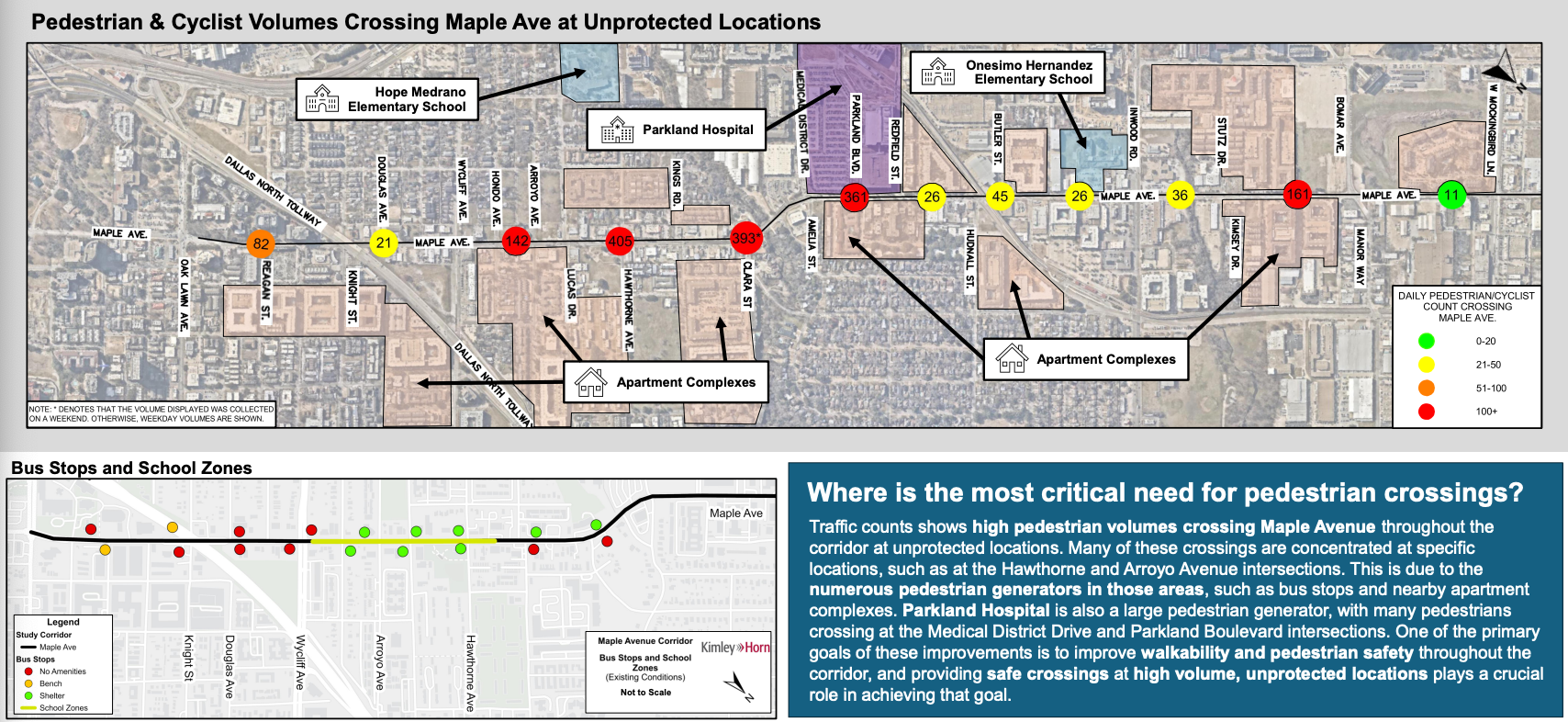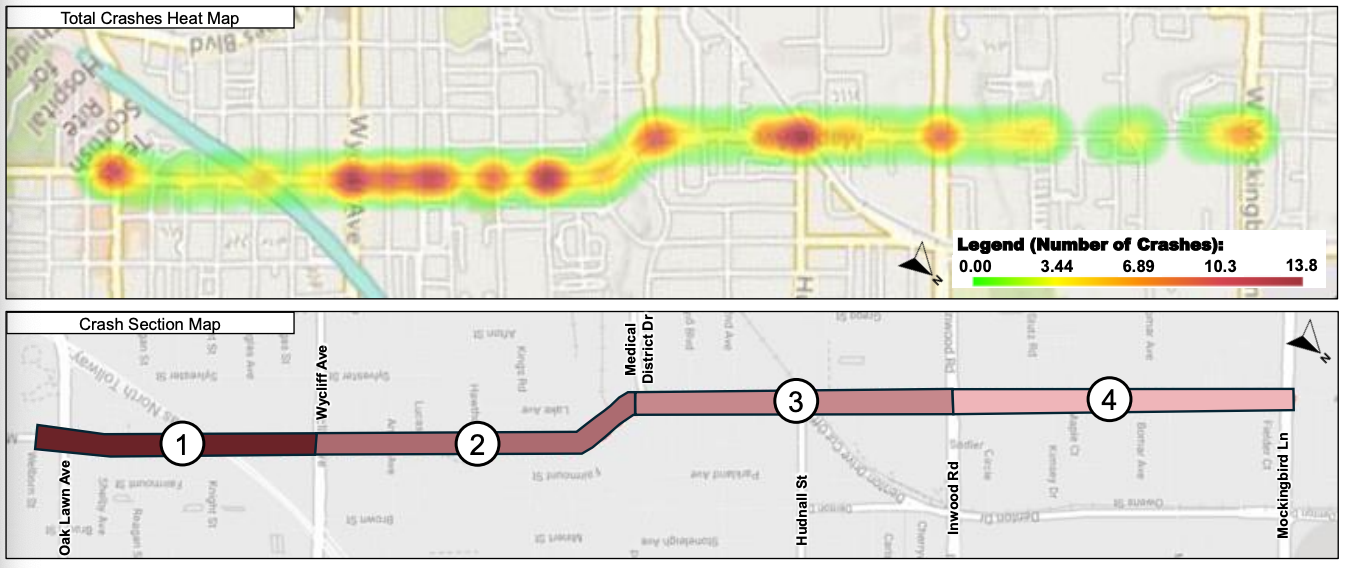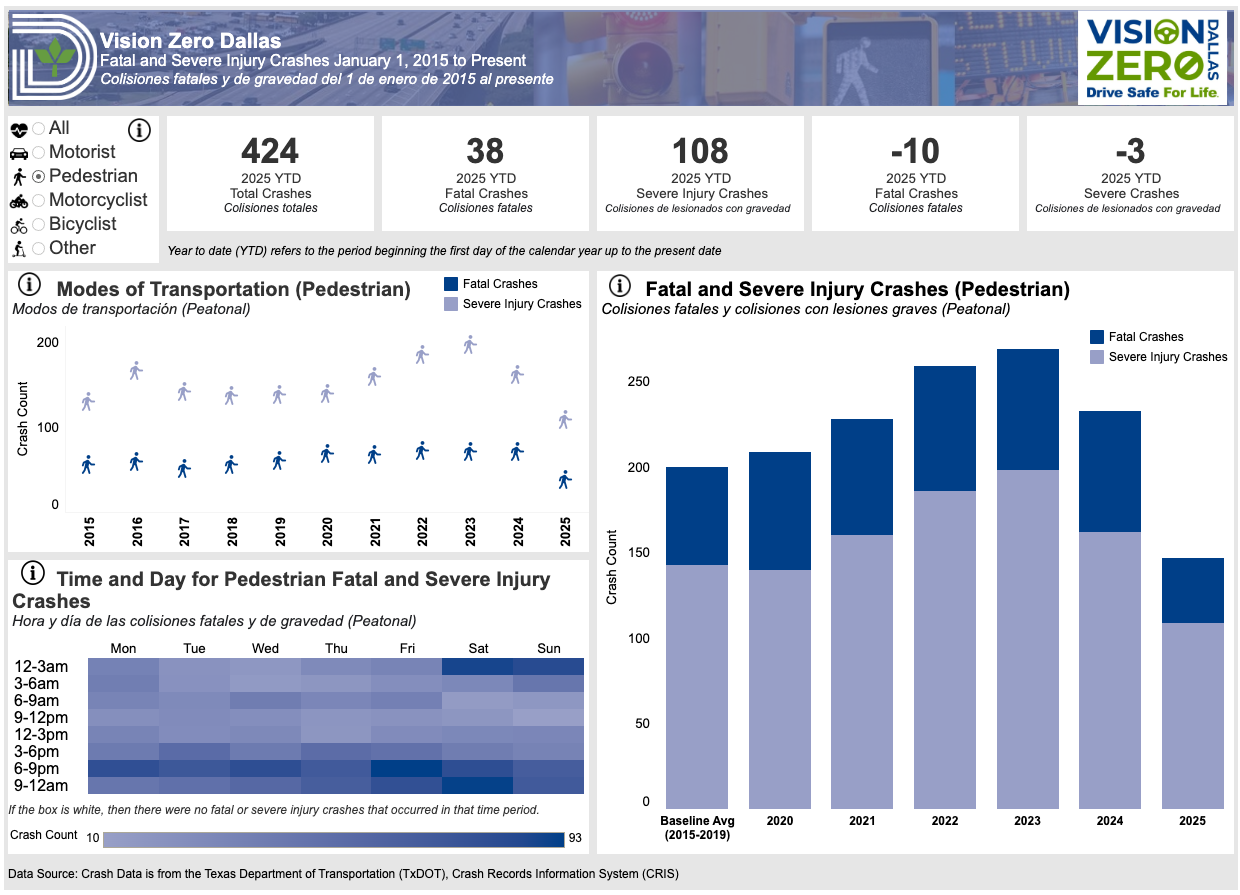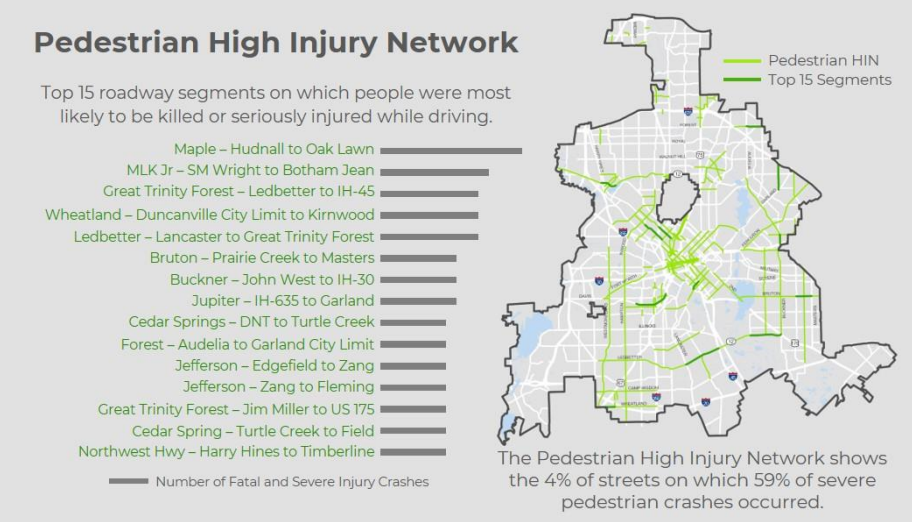Published by Brooker Law, PLLC — Dallas, Texas | Pedestrian Accident Lawyers
Last Updated: November 5, 2025
TL;DR
Dallas ranks among the most dangerous major U.S. cities for pedestrians, and most serious crashes happen on a small fraction of its streets. Brooker Law, a Dallas-based wrongful death and catastrophic injury firm, explains which corridors see the highest number of pedestrian injuries and deaths — and why speed, driver behavior, and design play a larger role than most people realize. Contact Brooker Law for a free, confidential consultation.
The Hidden Geography of Danger
In Dallas, pedestrian crashes are not random. They concentrate — block by block — on a handful of high-speed corridors that slice through neighborhoods, business districts, and residential streets.
According to city crash data, nearly two-thirds of all serious and fatal crashes occur on just seven percent of Dallas streets.
These aren’t small, local roads. They’re major arteries designed to move vehicles quickly, and they’re costing us our neighbors. Among the most dangerous corridors identified in the City of Dallas Vision Zero data include:
- Loop 12 and East Ledbetter Drive – Fast-moving multi-lane segments where speed, poor lighting, and limited crossings combine to create deadly conditions.
- Maple Avenue near Oak Lawn – A hotspot for pedestrian crashes amid heavy traffic, nightlife, and limited crossing infrastructure. Sadly, this hotspot is just blocks away from Brooker Law's offices.
- Buckner Boulevard and Hampton Road – Wide roadways that cut through dense residential areas with few safe mid-block crossings.
These roads share a common DNA with wide lanes, high speeds, and environments that favor vehicles over people. Because of its proximity to Brooker Law's offices, this article will highlight the pedestrian safety issues facing Maple Avenue.

The Dangers on Dallas Streets
Pedestrian crashes in Dallas follow predictable patterns -- tied not just to behavior, but to design and context.
1. High-Speed, Multi-Lane Roadways
The faster a driver goes, the less time they have to react. And when crashes occur at higher speeds, the consequences are almost always catastrophic. More than half of Dallas’s severe crashes occurred on principal arteries and roadways.


2. Mid-Block Crossings and Desire Lines
Over 50 percent of severe pedestrian crashes in Dallas happen between intersections, not at them. That’s not because pedestrians are careless; it’s because they’re practical. When crosswalks are spaced a quarter-mile or more apart, people naturally take the most direct route to where they’re going, despite the risk.
3. Lighting and Visibility
Crashes spike just after sunset, between 6:00 p.m. and midnight, when lighting transitions and glare reduces visibility. Many Dallas corridors lack adequate lighting or reflective signage. These factors can turn a simple walk home into a deadly risk.

4. Left Turns and Driver Distraction
Left turns at signalized intersections account for roughly 10 percent of all severe pedestrian crashes. Add distraction (texting, navigation apps, or in-car screens) and reaction times disappear.
5. Socioeconomic and Equity Factors
Data also shows that severe crashes are more common in neighborhoods with lower household incomes and fewer transportation options. These are often areas where people walk out of necessity (near transit stops, apartments, or job centers) but the infrastructure hasn’t kept up.

The Data Tells a Story of Neglect
The City of Dallas has a stated goal of eliminating all traffic-related deaths and reducing severe injury crashes by 50 percent. To accomplish its aggressive goal, Dallas created the Vision Zero Action Plan and task force. Vision Zero’s initial analysis confirms what Dallas residents already feel:
The city wasn’t built with pedestrians in mind.
Dallas has the second-highest traffic fatality rate among America’s 15 largest cities — higher than Houston, San Antonio, and even Los Angeles.
But those deaths do not have to be inevitable. Cities like Austin and San Francisco have reduced pedestrian fatalities by redesigning dangerous streets, lowering speed limits, and investing in lighting, crossings, and enforcement. Dallas can do the same and is taking the right step forward with the Vision Zero task force.
How Dangerous Streets Affect Cases
When Brooker Law investigates a pedestrian crash, the street itself becomes part of the evidence. We often look at:
- Traffic signs and signal-light timing;
- Prior crash data at the same location;
- Sightline obstructions and lighting conditions; and
- Traffic engineering plans.
It is important for the jury to understand the entire scene so that they can more accurately assess the defendant driver's behavior. Brooker Law will hire accident reconstruction experts to analyze and explain crash dynamics.
Is Dallas Getting Safer?
The city’s Vision Zero Dashboard shows slight declines in total crashes — but pedestrian injuries have actually increased since 2022, although they are slightly down YTD 2025 from the same time period in 2024. These high risks to pedestrian safety continue because enforcement alone can’t fix design. Until speed, lighting, capacity, and crossing access improve, pedestrians will remain vulnerable and at risk, and trial lawyers will continue to see preventable deaths.

FAQ: Dallas Pedestrian Crashes
Where do most pedestrian accidents happen in Dallas?
The City of Dallas is specifically studying eight hotspots which present the highest-risk for pedestrian safety: Loop 12 (Ledbetter Drive to Buckner Blvd.), Maple Avenue (Oak Lawn to Mockingbird), Camp Wisdom Road (Cockrell Hill to IH-35), Lake June Road (U.S. 175 to Cheyenne Road), Masters Drive/St. Augustine Road (U.S. 175 to Military Parkway), Ferguson Road (IH-30 to IH-635), Malcolm X Boulevard (MLK to Elsie Faye Heggins), and Webb Chapel Road/Lombardy Lane (Harry Hines to Shorecrest).

Are these crashes mainly caused by pedestrians crossing illegally?
No. Data shows speed, failure to yield, running red lights, distracted driving, and driving under the influence of drugs or alcohol are the primary factors that cause auto-pedestrian collisions.
Can the city be held responsible for dangerous street design?
In very limited cases, yes. However, because the City has broad sovereign immunity, a lawsuit focused exclusively on the defendant driver's negligence or recovering the victim's uninsured/underinsured motorist coverage is more efficient and effective.
How can families of victims pursue justice?
By filing personal injury or wrongful death claims against negligent drivers — and when appropriate, exploring additional liability for uninsured/underinsured motorist coverage or unsafe design.
Contact Brooker Law
Brooker Law, PLLC represents victims and families in Dallas pedestrian accidents, crosswalk collisions, and wrongful death cases throughout Texas. Our firm’s mission is to make Dallas streets safer by holding negligent drivers and companies accountable. Contact Brooker Law today for a free, confidential consultation.
Disclaimer
This article is for informational purposes only and does not constitute legal advice. Every case is different. For advice about your specific situation, contact Brooker Law, PLLC.











